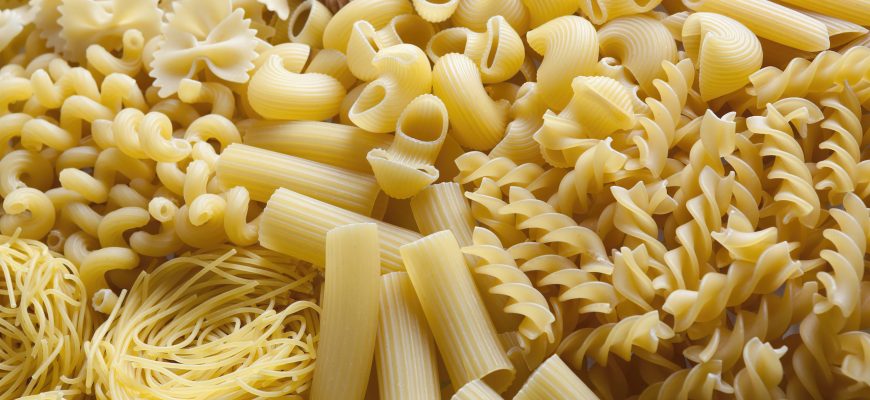The Origins of Pasta
Pasta, a staple in Italian cuisine, has a history that stretches far beyond Italy’s borders. From China to the Mediterranean, early versions of noodles were consumed. However, Italy embraced and perfected pasta like no other. The diverse climate and landscapes across Italy’s regions influenced the myriad of pasta shapes and sizes.
- Fact: Did you know? Pasta’s etymology is traced back to the Greek word ‘Pastos’ which means ‘sprinkled with salt’.
Pasta: More Than Just Spaghetti
When people think of pasta, they often visualize spaghetti. However, Italy boasts a myriad of unique pasta types, each with its story and purpose. Here are some types to elevate your culinary lexicon:
- Penne: Cylindrical and cut at an angle. Ideal for chunky sauces.
- Farfalle: Recognizable as ‘bow-tie’ pasta. Perfect with light, creamy sauces.
- Linguine: Flatter than spaghetti. Seafood sauces are its best friends.
- Rigatoni: Large, ridged tubes. They’re champions at holding robust meat sauces.
- Ravioli: Square or round pockets, filled with meat, cheese, or veggies.
- Orzo: Resembling rice grains, they are commonly used in soups or as side dishes.
- Pappardelle: Broad, flat ribbons. A favorite for thick, hearty sauces.
As you experiment, remember that the pasta shape can make or break a dish. The trick lies in pairing the right shape with its sauce counterpart.
- Tip: Always save a cup of pasta water before draining. It can help emulsify and thicken your sauce!
The Renaissance of Whole Wheat and Gluten-Free Pasta

Today’s consumers are more health-conscious. This shift led to the evolution of pasta varieties. Whole wheat pasta offers more fiber and nutrients than its white counterpart. For those with celiac disease or gluten sensitivity, gluten-free pasta made from corn, quinoa, or rice flour is available.
- Advice: Gluten-free pasta often requires more attention while cooking to ensure the right texture.
Pairing Pasta with Sauces
While the diversity of pasta is a testament to culinary ingenuity, the essence of a perfect pasta dish lies in the harmony between pasta and its sauce. Some pasta types are crafted explicitly for specific sauces, ensuring a delightful bite every time.
- Spaghetti: These long, thin noodles are a classic choice for marinara and bolognese sauces. Their slender structure allows the sauce to cling, ensuring every bite is flavorful.
- Fusilli: These spiral-shaped pastas have multiple twists, making them perfect for capturing chunky sauces and small ingredients like peas or diced vegetables.
- Lasagne: Broad and flat, lasagne sheets are the backbone of the iconic layered dish, interwoven with cheese, meat, and rich sauces.
- Conchiglie: Also known as shell pasta, their concave shape serves as tiny bowls, ideal for capturing creamy sauces or even meaty fillings.
Remember, the pairing isn’t about strict rules but rather about complementing textures and maximizing flavor. A well-paired pasta and sauce feel like they were made for each other, with each bite offering a harmonious blend of taste and texture.
- Trivia: The largest pasta dish ever made was in 2010 in Poland, weighing in at 17,416 lbs!
Pasta: Beyond Italy
While Italy is the heartland of pasta, this beloved dish has found its way to various cultures, each adding its unique twist.
- Japan’s Ramen: An adaptation of Chinese noodles, these are often served in a broth with meat and veggies.
- Germany’s Spaetzle: These are tiny dumplings, often served with meaty stews or gravy.
- Turkey’s Manti: Tiny dumplings filled with meat, usually served with yogurt and spices.
These international renditions emphasize pasta’s universal appeal and its adaptability to different flavors and culinary traditions.
In essence, pasta is more than just food. It’s a canvas of culinary artistry, a staple that has evolved over centuries, and a universal comfort food. From the rolling hills of Tuscany to bustling Tokyo streets, pasta’s allure remains unparalleled, continually evolving and delighting palates worldwide. Whether drenched in rich sauces, filled with exquisite fillings, or simply drizzled with olive oil, pasta is, undeniably, a global favorite.

